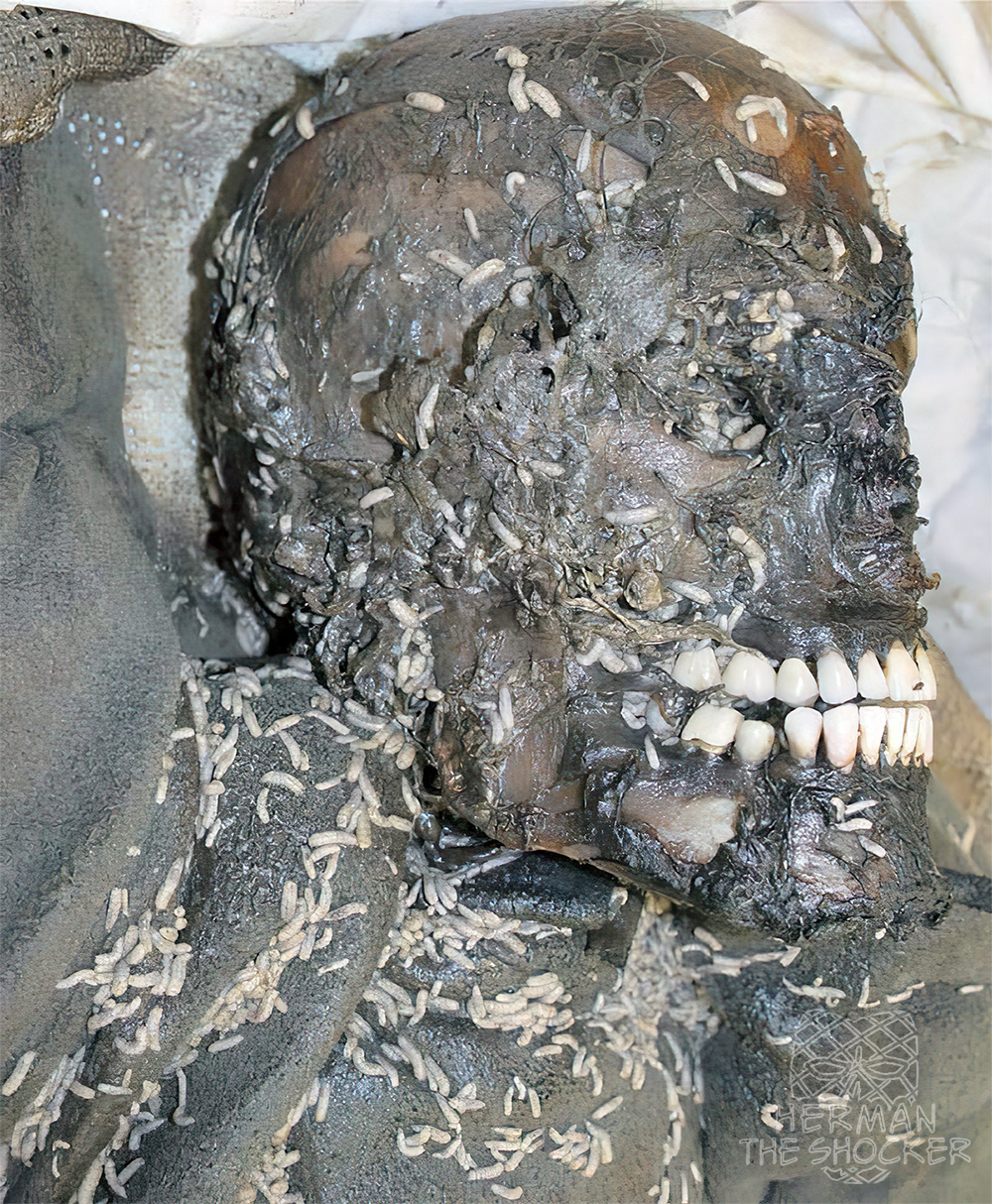Forensic entomology is the study of insects as they relate to death investigation. For example, fly larvae can be obtained at the death scene, identified, and reared in incubators. The postmortem interval (time of death) can be estimated based on the fixed-time growth cycles of the fly larvae.
Fly larvae speed up decomposition by consuming soft tissue. Eventually, the larvae will greatly diminish in number, leave when all the soft tissue has been consumed, and become flies.
The method of using the age and development of maggots can give a date of death accurate to a day or less, or a range of days, and is used in the first few weeks after death. Maggots are larvae or immature stages of Diptera or two-winged flies. The insects used in this method are those that arrive first on the corpse, that is, the Calliphoridae or blowflies. These flies are attracted to a corpse very soon after death. They lay their eggs on the corpse, usually in a wound, if present, or if not, then in any of the natural orifices. Their development follows a set, predictable, cycle.
The insect egg is laid in batches on the corpse and hatches, after a set period of time, into a first instar (or stage) larva. The larva feeds on the corpse and moults into a second instar larva. The larva continues to feed and develop into a third instar larva. The stage can be determined by size and the number of spiracles (breathing holes). When in the third instar, the larva continues to feed for a while then it stops feeding and wanders away from the corpse, either into the clothes or the soil, to find a safe place to pupate. This non-feeding wandering stage is called a prepupa.
The larva then loosens itself from its outer skin, but remains inside. This outer shell hardens, or tans, into a hard protective outer shell, or pupal case, which shields the insect as it metamorphoses into an adult. Freshly formed pupae are pale in colour, but darken to a deep brown in a few hours. After a number of days, an adult fly will emerge from the pupa and the cycle will begin again. When the adult has emerged, the empty pupal case is left behind as evidence that a fly developed and emerged.
Latest posts











